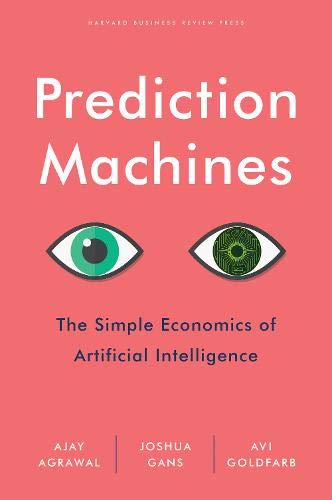If you’re going to be working in technology for more than 10 years, you should read this book. It’s written by a set of economists associated with the Creative Destruction Lab at the University of Toronto. As you might imagine from an incubator with that name, they have made many investments in Machine Learning companies. The observations in the book are less about how machine learning works (though there is obviously some introduction required) and more about the implications for the wider economy.
As the title suggests, they believe that the current advancements in artificial “intelligence” are not related to general intelligence, but are making advancements in computers’ ability to distill lots of data about what humans have done to make a prediction. For example, Google’s image recognition doesn’t actually “recognize” images, it is only able to say, “based on other sets of pixels that people have identified as tables, I think that there is a 98% chance that is a photo of a table.” This key assumption then allows them to predict how further advancements in these prediction machines will impact the kinds of companies, jobs, social programs, etc… that will go up (or down) in economic value.
As they put it, “Economics offers clear insights regarding the business implications of cheaper prediction. Prediction machines will be used for traditional prediction tasks (inventory and demand forecasting) and new problems (like navigation and translation). The drop in the cost of prediction will impact the value of other things, increasing the value of complements (data, judgement, and action) and diminishing the value of substitutes (human prediction).”
The remainder of the book explores logical deductions from that fact. Some of the more interesting of which are:
- Some areas of prediction only become real game changers when the machines reach near 100% certainty. For example, imagine if when Amazon made a recommendation they could be 98% sure that you’d want to buy the product… would they send automatically send the product to a distribution center near your house? Maybe just send it straight to you and let you return one product in fifty that they’re actually wrong about.
- The value of data is going up quickly.
- Machines and humans have distinct strengths… humans tend not to be thorough while machines can’t discover independently a new type of data that should be incorporated. The two will be paired with machines doing the prediction and humans doing the judgement.
- They identify 6 types of risks associated with Prediction Machines. The most interesting of which is that on things like driving an airplane, humans are getting less and less skilled at it while auto-pilot does more.
